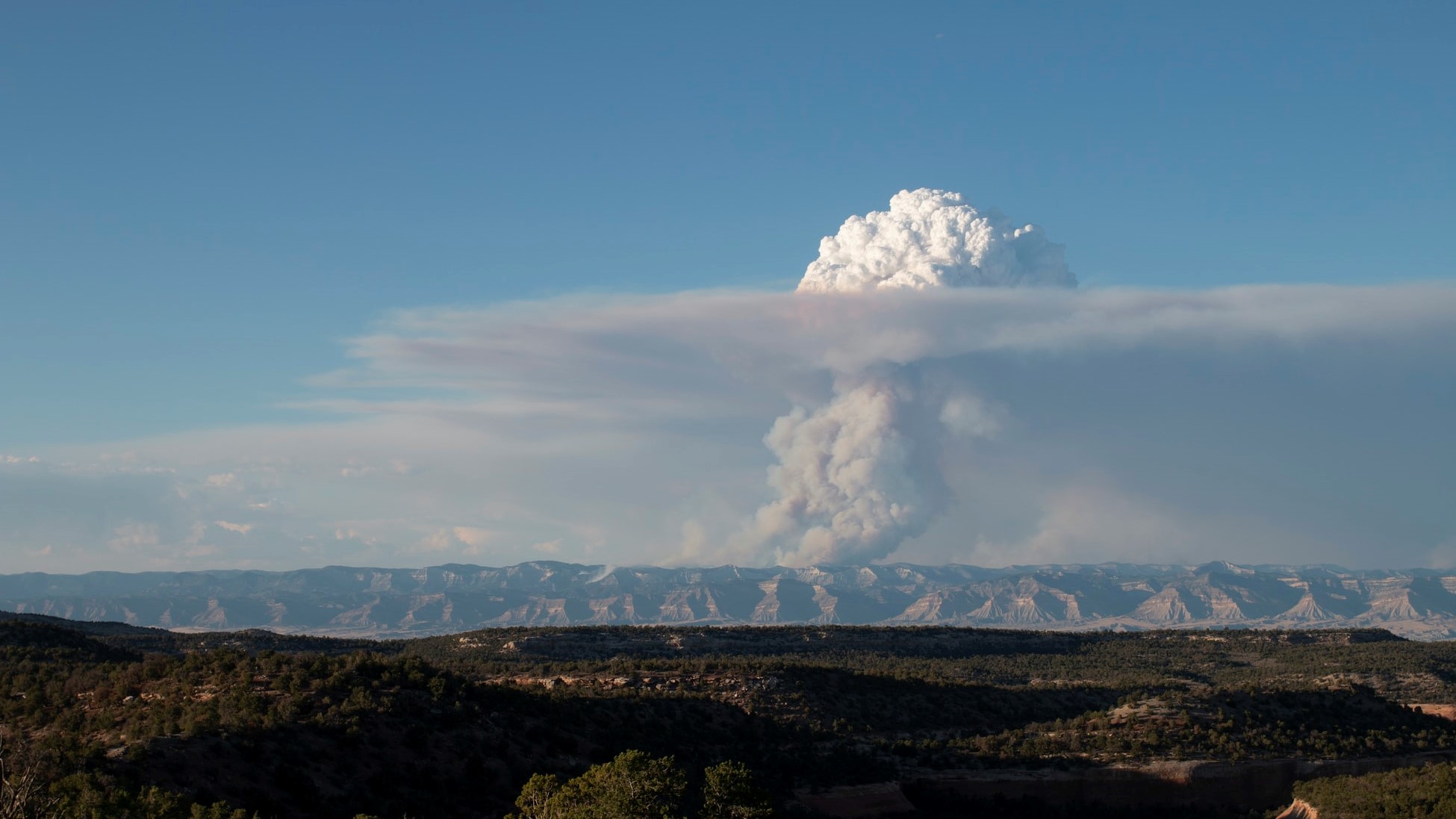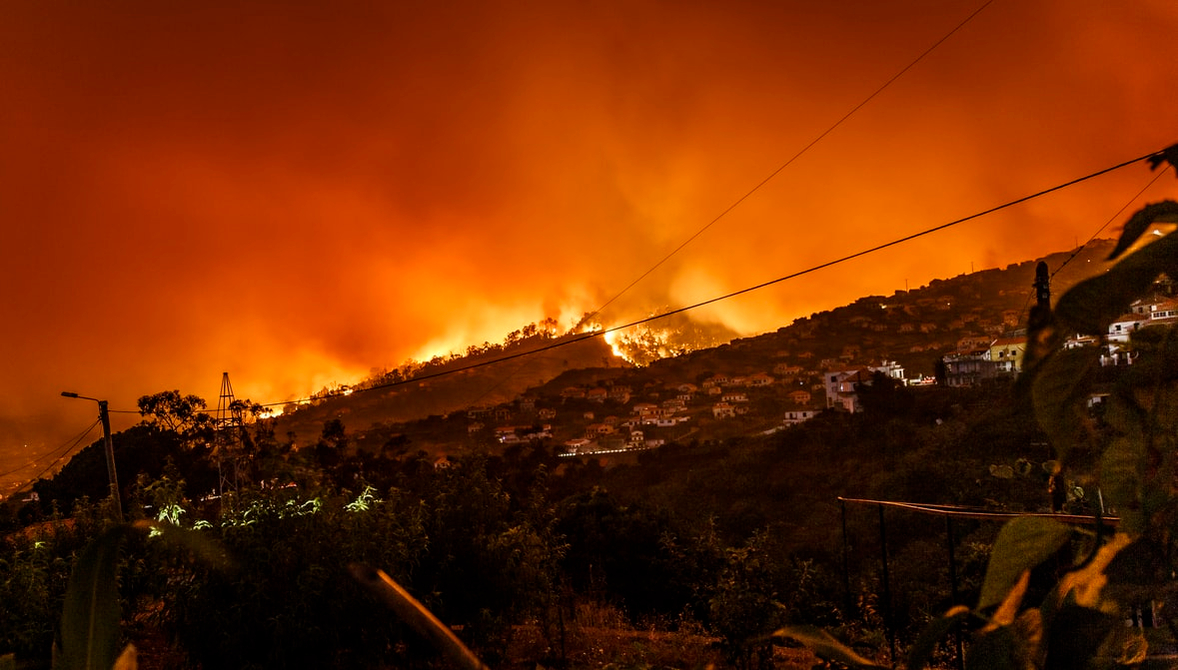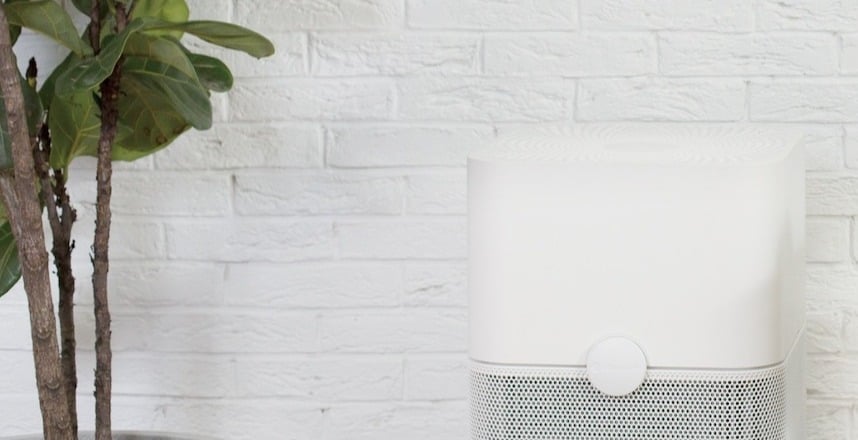Newsletter
Each year we seem to see record-breaking wildfires. Last year, the bushfires in Australia destroyed vast swaths of land across the continent, and the wildfire season in California was the most intense on record. Unfortunately, with global climate change, we will likely continue seeing these alarming events as precipitation patterns are disrupted and higher temperatures contribute to droughts.

Beyond the fires themselves, wildfires create a major health threat: wildfire smoke. Wood smoke doesn’t sound nearly as dangerous as industrial pollution, so why is it considered so harmful? If you don’t live near the fires, can wildfire smoke still impact your life?
To answer these questions, and to provide an overview of wildfire smoke, we’ve created this guide for your reference.
Wildfire Smoke Guide: What You Need To Know
What Are Wildfires?
Wildfire definition:
Wildfires, also known as brush fires, bush fires, or forest fires, are uncontrolled fires that burn natural vegetation or human developments.
While wildfires are generally thought to be natural disasters, they are beneficial to the ecosystem under certain circumstances. Wildfires burn away shrubs and underbrush, allowing sunlight to penetrate to the ground and promoting the growth of new grasses, shrubs, and trees. Some species even depend on wildfires for survival; for example, some conifers require fire before their cones release seeds.
However, wildfires go from healthy to dangerous based on their intensity and proximity to human settlements. Intense fires can be more difficult for firefighters to get under control, and wildfires too close to humans can destroy property and endanger the health and safety of those in the community.
What Causes Wildfires?
Wildfires have both natural and human sources. In dry areas, a stray lightning strike can easily spark a wildfire. Human causes of wildfires are not nearly as straightforward, as previous sparks include:
- Unattended campfires
- Discarded cigarettes
- Acts of arson
- Machinery and mechanical malfunctions
- Debris burning

Climate change is making certain fire-prone areas like the Sierra Nevada mountain range increasingly arid, creating buildups of dry underbrush that can easily catch fire. Our own prevention of natural fires makes wildfires, when they do occur, more intense, as the underbrush that would ordinarily burn away in a mild, natural fire can build up to risky levels.
What’s in Wildfire Smoke?
When you’re sitting around your campfire, it can be hard to imagine that wood smoke is anything threatening. But just what is in that campfire smell? We have to remember, even if wood smoke smells nice and homey, it’s still smoke, and it's chock-full of particulate matter.

The chemical reaction occurring in wildfires is incomplete combustion, hence the orange-yellow flames. Not all fuel is used during incomplete combustion, and the remaining fuel is belched out of the fire as black carbon, or soot. These soot particles, typically ranging between 0.4 μm and 0.7 μm, are both inhalable (classified as PM2.5) and highly dangerous to your health at elevated concentrations.
What Are the Health Effects of Breathing Wildfire Smoke?
While wildfires also produce carbon monoxide and volatile organic compounds, these substances usually stay near the fires themselves and don’t travel the kind of distances smoke does. Wildfire smoke itself is composed of fine particles, or PM2.5, which is one of the most dangerous air pollutants.
PM2.5 is known to cause an array of health effects, ranging from short-term irritation to severe, long-term health conditions. Some of these conditions include:
- Bronchitis
- Respiratory disease
- Diabetes
- Cardiovascular disease
- Premature death
California’s 2020 wildfire season
One of the reasons wildfires are so dangerous is the sheer amount of particulate matter created by these events. We recently examined the 2020 wildfire season in California (read the full report here!) and discovered that, near the epicenter of the fire, PM2.5 levels were more than 50 times greater than acceptable, healthy limits. Additionally, every area in California experienced an increase in particulate matter pollution due to wildfire smoke. So, not only do wildfires produce staggeringly enormous amounts of particulate matter over a relatively short timeframe, but wildfire smoke can spread for hundreds of miles.
For more information about particulate matter, including other sources and protection measures, we encourage you to check out our guide to understanding particulate matter.
How To Protect Yourself From Wildfire Smoke
Now that we’ve discussed the health effects, let’s cover what we can personally do to protect ourselves and our homes from wildfire smoke.
Take a look at local, real-time air quality readings
One of the speediest, no-cost ways to protect yourself from wildfire smoke is to check your local AQI values. Air quality data from your local station will let you know if wildfire smoke is bad in your area; if particulate matter levels are elevated, you should consider taking the steps below.
Kaiterra's Live Air is a great, free resource for you during wildfire season. With hyperlocal air quality data available at your fingertips, you can be sure to stay informed about the air quality conditions in your community.
Power up your air purifier
One of the most powerful tools you have at your disposal is an air purifier. As much as you avoid going outside during wildfire season, some smoke will inevitably leak in from the outdoors, even if you don’t live too close to the fires themselves.

You're home isn't 100% airtight; particulate matter can seep in through your doors and windows.
Air purifiers can reduce the amount of particulate matter in your home by a significant margin, protecting you from both wildfire smoke and other potential sources of particulate matter. In general, we recommend a HEPA purifier as the most effectual purifier for wildfire smoke; ionic purifiers also eliminate smoke, but you must be cautious about the amount of ozone produced by the purifier. If you do use your purifier during wildfire season, please be aware that your filter will get clogged much faster than expected, so you will need to replace it more often than the manufacturer's recommendation.
Put on a mask
With the COVID-19 pandemic changing all of our lives in 2020, we are all pretty familiar with masks now. The good news is that specific masks can also help protect you from pollution. The bad news is that the cloth and surgical masks most of us are used to wearing won’t do anything against particulate matter.

If you do need to head out on smoky days, we recommend that you wear an N95 or KN95 pollution mask that fits closely to your face. If air leaks around the edges of your mask, then it won’t be nearly as effective, and you might be inhaling unhealthy levels of smoke.
Invest in an air quality monitor
For an optimal pollution-protection setup, you should invest in an air quality monitor. Not only will an air quality monitor tell you your exact particulate matter readings inside your home, but some, like Kaiterra's Laser Egg series, will also provide AQI readings from your local station. Recommended by Wirecutter as the best home air quality monitor, our Laser Egg devices all provide reliable, accurate air quality readings for your home, with versatile home automation integrations and app connectivity.
With the data provided by your monitor, you will know when to turn your purifier on and when to wear a mask outdoors. Smoke is only visible to the naked eye when levels are significantly unhealthy, so you shouldn’t rely on your senses to inform you about the status of your home’s air.
What Can We Do To Prevent Wildfires?
Protecting ourselves individually will only go so far; as wildfires become more and more intense, we need to formulate more permanent solutions as communities to prevent wildfires.
Discourage development near fire-prone areas
One of the best ways for us to prevent wildfires is to stop living in at-risk areas. This sounds like a bit of a no-brainer, but since humans often create the sparks that initiate wildfires, if we stop developing wildfire-prone land, then wildfires will likely decrease.
Likewise, wildfires can destroy people’s homes and livelihoods, so putting up communities further away from dry, easily flammable areas will help keep people out of harm's way. If houses and businesses are built in these areas, increasing the amount of space between buildings and wildlife can limit human-caused sparks.
Implement controlled burns
While it may seem counterintuitive to set a fire to stop a fire, controlled burns are an effective way to manage wildfire-prone areas.

Regular fires help sunlight penetrate down to the forest floor, promoting new growth.
Controlled burning, also known as prescribed burning, is the planned and coordinated burning of either an area of land or large piles of pre-collected forest materials. Weather, timing, management, and burn size are all considered when performing a controlled burn, and firefighting resources are always standing by.
These burns have many benefits, including:
- Taking care of the forest by clearing out flammable material buildups
- Redistributing nutrients to the soil
- Spurring certain species to disperse their seeds
- Eliminating invasive species and pests
Combat climate change
We’ve mentioned climate change a few times in this article, and for a good reason. As temperatures increase, the moisture content of the soil in certain parts of the world, like the southwest United States, will likely decrease. The amount of snow will also decrease significantly. The combination of these two factors will exacerbate wildfires in arid areas.

On the flipside, uncontrolled burns of large swaths of land release large amounts of carbon dioxide and other greenhouse gases. Thus, a feedback cycle is created, and it will be more difficult for us to stop climate change. Present action is highly valuable to avoid this feedback loop, and international agreements looking to combat climate change will end up helping stop wildfires, as well.
Climate change and air pollution have a close, complex relationship. Climate change increases the intensity of wildfires, which produce air pollutants like particulate matter, carbon dioxide, and volatile organic compounds. These pollutants, in turn, also contribute to global warming.
To understand more about air pollution, including its connection with climate change, check out our in-depth article below:






.png?width=200&height=148&name=Menu%20C%20(2).png)

.png?width=307&height=228&name=Menu%20-%20D%20(1).png)
.png)





